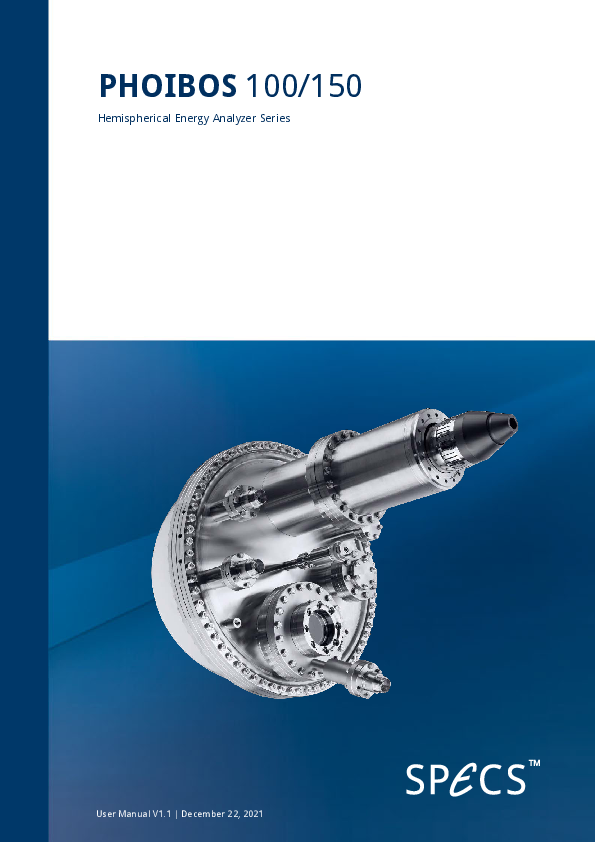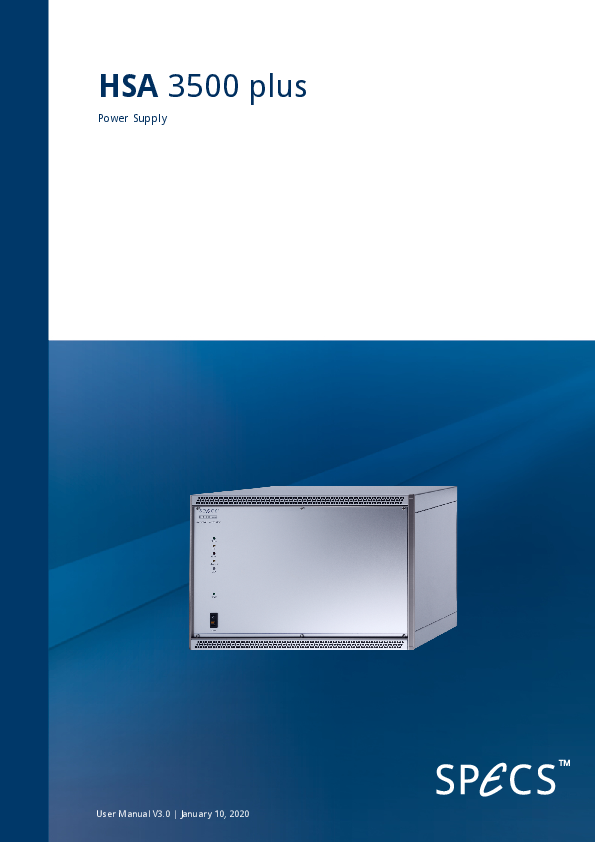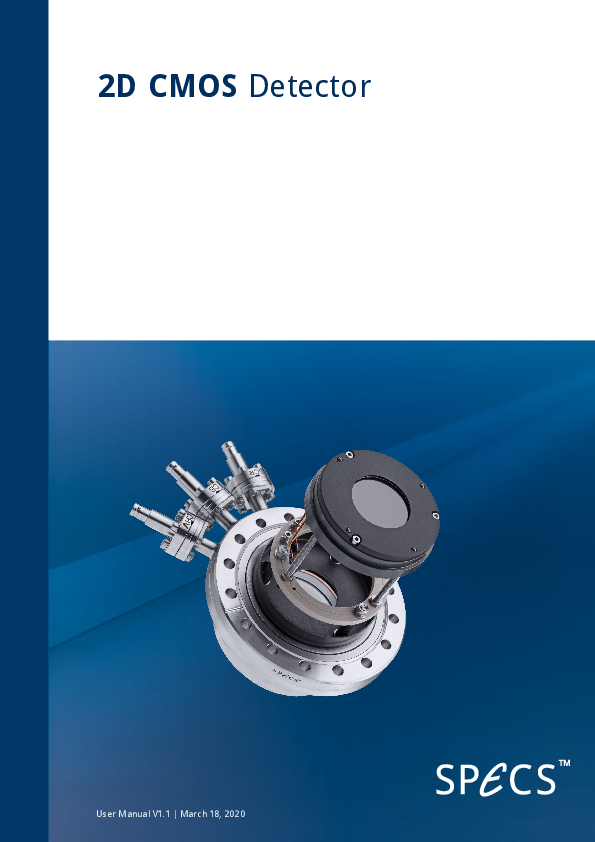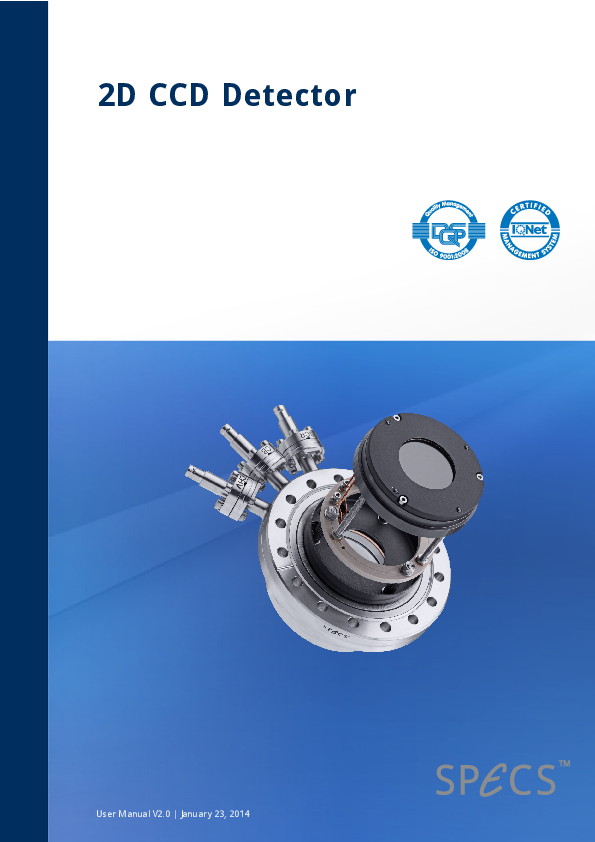 Detail
DetailPHOIBOS 150 2D-CMOS/-CCD
Hemispherical Energy Analyzer with 2D CMOS Detector for XPS, ARPES, ISS and LEISS with 150 mm Mean Radius
The PHOIBOS 150 hemispherical energy analyzer is the state-of-the-art analysis solution for photoelectron spectroscopy. This analyzer can be operated in all relevant analysis modes, such as ARPES, XPS, UPS, as well as AES, ISS and LEISS. Its design and the modular supplementary hardware makes this analyzer the most versatile PES analyzer in the market.
With a 2D CMOS detector is shows outstanding performance in countrate, linearity and a true pule counting mechanism. It combines a state of the art lens system with a proven hemipshere design for highest transmission and resolution. The analyzer can be operated in transmission (XPS/UPS), angular resolved (ARPES) and magnification mode (slab imaging).
The energy analyzer sectionis equipped with 8 customizable entrance and 3 exit slits. For highest energy resolution the entrance slit can be chosen down to 50 µm, providing achievable energy resolution better than 1.8 meV. The analyzer comes with a highly stable power supply, the HSA 3500 plus, for best performance in a wide kinetic energy range.
A classical CCD camera detection system is available on request.
SPECIFICATIONS
| Energy Resolution | < 1.8 meV |
| Angular Resolution | < 0.1° |
| k-Resolution | N/A |
| Acceptance Angle | ±15°, ±7°, ±4° and ±3° |
| Lateral Resolution | < 35 µm |
| Smallest Acceptance Spot | 100 µm |
| XPS Count Rates UHV | > 0.5 Mcps @ 0.85 eV and > 1.5 Mcps @ 1.00 eV FWHM |
| Detector Channels | 1285x730 (with Channel Binning) |
| Kinetic Energy Range | 0-3500 eV |
| Pass Energies | 0-550 eV Continously Adjustable |
| Energy Dispersion | Hemisphere |
| Lens Modes | Transmission Mode, Angular Resolved Mode, Magnification (Lateral Resolved) Mode |
| Measurement Modes | Snapshot Mode, Sweeping Mode, Fixed Energy Mode |
| Detector | 2D CMOS Detector |
| Slits/Apertures | 8 entrance and 3 exit slits and iris aperture |
| Energy Window | 13% of Pass Energy |
| Electronics | HSA 3500 + |
| Working Pressure | 10-11 to 10-7 mbar |
| Working Distance | 40 mm |
| Mounting Flange | DN100CF (6" OD) |
| Magnetic Shielding | Double µ-Metal Shielding |
| Electric Isolation | > 10 keV |
SPARE PARTS

Spare channelplate set for all 40 mm CCD detectors

Spare phosphor screen for all 40 mm CCD detectors. Exchange with channelplates is recommended.

Replacement feedthrough for PHOIBOS Release R5 & R6 iris mechanism

Replacement spindle for PHOIBOS Release R5 & R6 iris mechanism























